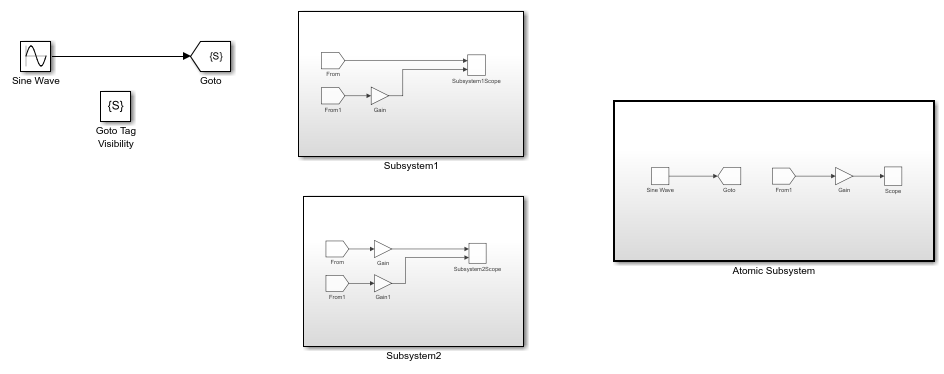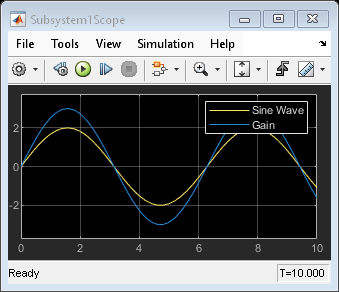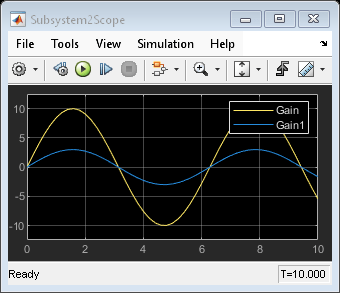Goto Tag Visibility
定义 Goto 模块标记的作用域
库:
Simulink /
Signal Routing
描述
Goto Tag Visibility 模块定义具有 scoped 可见性的 Goto 模块标记的可访问性。您为 Goto 标记模块参数指定的值可由模型层次结构中包含 Goto Tag Visibility 模块的同一子系统中及其下层的子系统中的 From 模块进行访问。
对于标记可见性参数值为 scoped 的 Goto 模块,Goto Tag Visibility 模块是必需的。如果标记可见性为 local 或 global,则不需要 Goto Tag Visibility 模块。模块显示的标记名称括在花括号 ({}) 内。
注意
封装系统中的限定作用域 Goto 模块仅在该子系统以及它包含的非虚拟子系统中是可见的。如果您运行或更新模块图,而有一个 Goto Tag Visibility 模块在模块图中的级别低于封装子系统中对应的限定作用域 Goto 模块,Simulink® 将生成错误。
在 Simulink 编辑器中,选择 Goto Tag Visibility 模块以突出显示对应的 Goto 和 From 模块。当对应的 From 或 Goto 模块不在当前图中时,包含该模块的 Subsystem 模块会突出显示。
要在打开的图或新选项卡中显示对应的模块,请选择 Goto Tag Visibility 模块并在省略号上暂停。然后,从操作栏中选择相关模块  。当多个模块对应于所选模块时,将打开一个相关模块列表。您可以通过在文本框中输入搜索词来过滤相关模块列表。从列表中选择相关模块后,窗口焦点转至显示该相关模块的打开的图或新选项卡。
。当多个模块对应于所选模块时,将打开一个相关模块列表。您可以通过在文本框中输入搜索词来过滤相关模块列表。从列表中选择相关模块后,窗口焦点转至显示该相关模块的打开的图或新选项卡。
示例
参数
模块特性
数据类型 |
|
直接馈通 |
|
多维信号 |
|
可变大小信号 |
|
过零检测 |
|
扩展功能
版本历史记录
在 R2006a 之前推出



